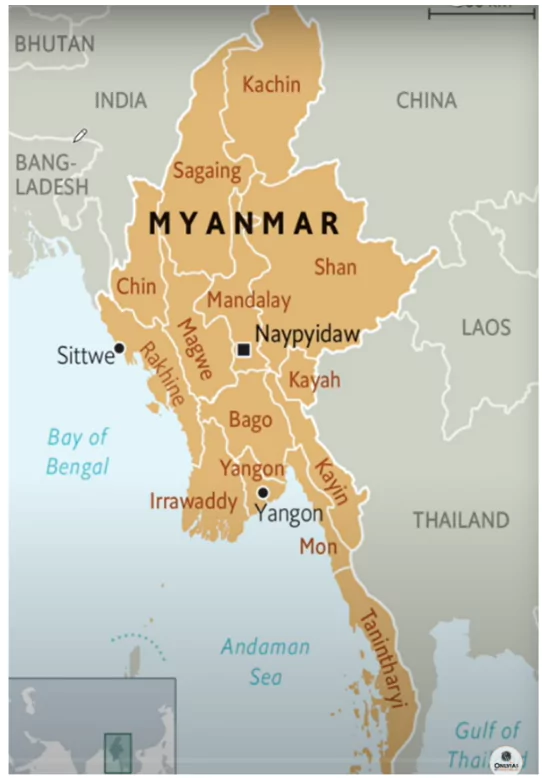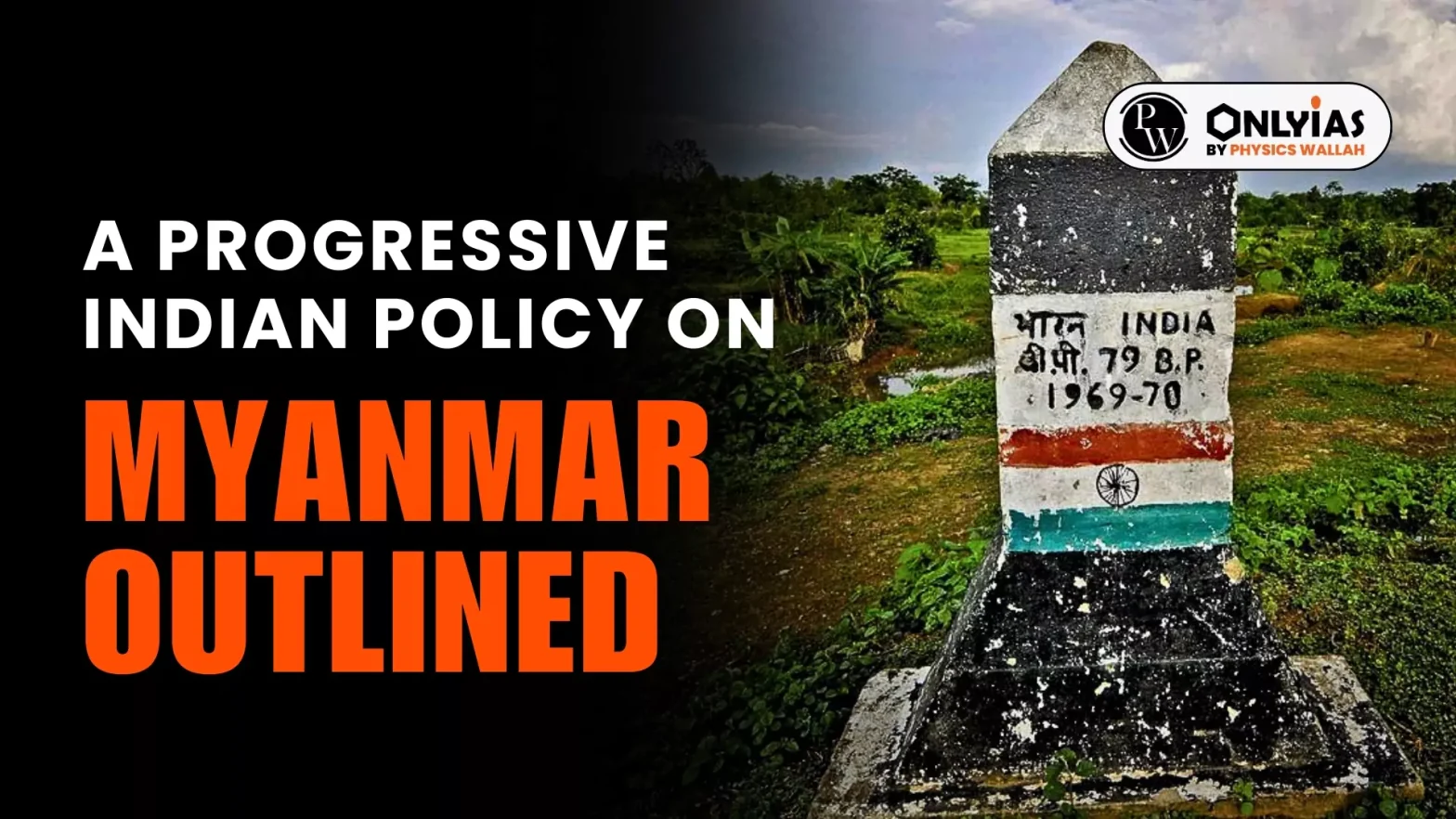Three years on, the military in Myanmar, which overthrew the elected civilian government in February 2021, continues to kill, maim and displace its own people.
Progressive Indian Policy on Myanmar
India has steadfastly maintained formal relations with this regime, which has so far murdered more than 5,000 people and displaced some 2.5 million people.
- In its second tenure, the Narendra Modi government did very little to engage with the pro-democracy resistance, which now has both political and military wings.
- Indian foreign policy scholars and practitioners have doggedly defended this policy by arguing that India needs to work with the junta if it has to protect its “interests” in Myanmar and not get swayed by an idealistic preoccupation with “values”.
Enroll now for UPSC Online Classes
How India can step out of China’s shadow
But, in foreign policy, there is no clear line between “values” and “interests” simply because neither has a standard definition.
- It all depends on how a country defines these terms.
- This is also the case with India’s Myanmar policy.
- New Delhi has long defined its “interests” in the Southeast Asian country in narrow strategic terms.
 But now, it needs to leverage a unique set of “values” to better defend its interests.
But now, it needs to leverage a unique set of “values” to better defend its interests.- It is possible for India to put in place a more progressive, values-driven Myanmar policy that works in favour, and not against, its national interests.
- This new policy should have two key pivots, namely, democracy and human security.
The new National Democratic Alliance (NDA) government, therefore, needs to take four interlocking steps immediately.
- First, India needs to use its credentials as the largest federal democracy in the region to sharpen its influence in Myanmar.
- For long, Myanmar’s pro-democracy political elites and civil society have looked up to India as a model of a federal democratic union with a well- oiled power-sharing arrangement between the centre and various subnational units.
- This is even more relevant today as the democratic resistance in Myanmar, which is led by the National Unity Government (NUG), dozens of ethnic revolutionary organisations, civil society organisations, and trade unions, strives to replace the military-drafted 2008 constitution with a federal constitution.
- By helping this vibrant opposition achieve its aim through capacity-building and knowledge exchange programmes, India can distinguish itself from China, its primary regional competitor in Myanmar.
- Both Beijing and New Delhi can sell military hardware to Myanmar, but only India can sell the spirit of federal cooperation.
- Here is a chance for the new Indian government to outmanoeuvre the Chinese in their own ‘backyard’.
- Second, India needs to immediately halt all weapon sales to the Myanmar military.
- According to the advocacy group, Justice For Myanmar (JFM), Indian state-owned military hardware manufacturers have sold a range of non-lethal and semi-lethal equipment to the junta since the 2021 coup.
- In its most recent report, the group claimed that on January 2, the Indian Air Force transferred a package which had 52 items, including navigation and communication parts, to its Myanmar counterpart.
- Another recent investigation by Frontier Myanmar claims that India sold more than $1.5 million worth of navy-grade diesel to junta-linked entities since the coup.
- New Delhi needs to immediately put a stop to these, as the Myanmar military continues to use all its three services – the army, air force, and navy – to attack non-combatant civilians using imprecise lethal tactics.
- Third, India needs to immediately open cross- border humanitarian corridors to help civilians affected by the conflict along three border provinces – Sagaing Region, Chin State and northern Rakhine State.
-
- According to United Nations Office for the Coordination of Humanitarian Affairs (UNOCHA) data, Sagaing Region has seen the largest quantum of internal displacement in all of Myanmar since the coup (as of March 25, 2024).
- Rakhine comes next, while Chin State sits tenth in the list.
- Continuing air strikes by the junta and clashes between armed groups in these areas have only pushed more civilians across the borders.
- New Delhi needs to first revoke its plans to fence the India-Myanmar border and reinstate the Free Movement Regime, or the FMR, which the Union Home Ministry suspended in February 2024.
- Then, it should engage existing humanitarian aid networks along the India-Myanmar border to send emergency relief assistance including medicines, food and tarpaulin to the other side.
- Mizoram, where a multi-layered asylum and aid ecosystem is already operational, is a good starting point.
- Fourth, the Narendra Modi government should immediately halt the detention and deportation of asylum seekers from Myanmar.
-
- This is especially so in the case of Manipur, where the BJP-led government has so far deported 115 asylum seekers to Myanmar – the latest round was on June 11.
- These are people who entered India not because they wanted to or with mal-intent, but because they were forced to. Regardless of the fact that India has not ratified the 1951 Refugee Convention, it is incumbent upon the government to treat them as refugees in need of humanitarian assistance and protection rather than as “illegal immigrants”.
Check Out UPSC NCERT Textbooks From PW Store
Conclusion
India’s evolving Myanmar policy must prioritize democracy, human security, and ethical diplomacy, distinguishing itself from China while advancing regional stability and humanitarian support.
![]() 22 Jun 2024
22 Jun 2024

 But now, it needs to leverage a unique set of “values” to better defend its interests.
But now, it needs to leverage a unique set of “values” to better defend its interests.